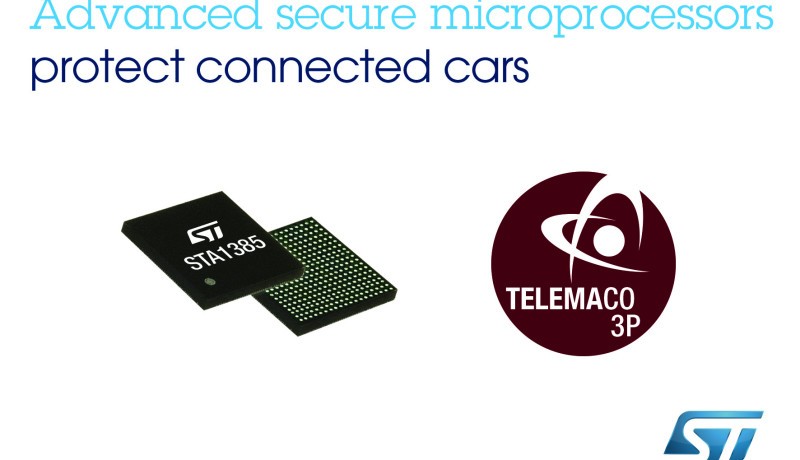Smart antenna protects car against cyber threats
October 26, 2017
on
on

For years, I managed to keep an old Opel Corsa alive because the most sophisticated electronics parts inside were probably its lightbulbs (not counting the radio, which was optional). Today cars are so full of electronics that they get scrapped when a wire comes loose. How things have changed.
Filled to the brim with electronic systems modern cars turn previously non-existent problems into big deals, and we start reading things like “STMicroelectronics is leading the race to protect connected cars against cyber threats...”
To fight these threats ST has launched the Telemaco3P telematics and connectivity processors STA1385 and its variants. Dual ARM Cortex-A7 devices integrating an isolated Hardware Security Module (HSM) subsystem based on an ARM Cortex-M3 to securely check the authenticity of received messages and any external devices that try to connect.
The new chips are also very robust, with a 105°C maximum temperature rating for use in locations that can become extremely hot, such as on top or directly beneath the roof in a smart antenna.
Smart antenna? Oh my God, even a piece of wire is getting “intelligent” and capable of running POSIX-compliant operating systems after adding three (!) 32-bit microcontrollers to it. The antenna that used to be just a copper wire now has CAN FD, Gigabit Ethernet, and 100Mbit/s Secure Digital I/O (SDIO) interfaces to create its own interference.
Progress, technology, we all crave it, but boy, how they complicate matter(s).
Illustration: STMicroelectronics
Filled to the brim with electronic systems modern cars turn previously non-existent problems into big deals, and we start reading things like “STMicroelectronics is leading the race to protect connected cars against cyber threats...”
To fight these threats ST has launched the Telemaco3P telematics and connectivity processors STA1385 and its variants. Dual ARM Cortex-A7 devices integrating an isolated Hardware Security Module (HSM) subsystem based on an ARM Cortex-M3 to securely check the authenticity of received messages and any external devices that try to connect.
The new chips are also very robust, with a 105°C maximum temperature rating for use in locations that can become extremely hot, such as on top or directly beneath the roof in a smart antenna.
Smart antenna? Oh my God, even a piece of wire is getting “intelligent” and capable of running POSIX-compliant operating systems after adding three (!) 32-bit microcontrollers to it. The antenna that used to be just a copper wire now has CAN FD, Gigabit Ethernet, and 100Mbit/s Secure Digital I/O (SDIO) interfaces to create its own interference.
Progress, technology, we all crave it, but boy, how they complicate matter(s).
Illustration: STMicroelectronics
Read full article
Hide full article



Discussion (0 comments)